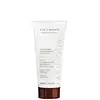What's inside
What's inside
 Key Ingredients
Key Ingredients

 Benefits
Benefits

 Concerns
Concerns

 Ingredients Side-by-side
Ingredients Side-by-side

Water
Skin ConditioningDihydroxyacetone
Skin ConditioningPropylene Glycol
HumectantGlycerin
HumectantEthoxydiglycol
HumectantAloe Barbadensis Leaf Juice
Skin ConditioningAscorbic Acid
AntioxidantTocopheryl Acetate
AntioxidantRubus Idaeus Seed Oil
EmollientHydrolyzed Silk
HumectantLecithin
EmollientCaffeine
Skin ConditioningPalmitoyl Carnitine
Skin ConditioningPEG-40 Hydrogenated Castor Oil
EmulsifyingGlycereth-26
HumectantPanthenol
Skin ConditioningParfum
MaskingLimonene
PerfumingGeraniol
PerfumingHexyl Cinnamal
PerfumingBenzyl Salicylate
PerfumingButylphenyl Methylpropional
PerfumingTetrasodium EDTA
Benzoic Acid
MaskingPhenoxyethanol
PreservativeDehydroacetic Acid
PreservativeWater, Dihydroxyacetone, Propylene Glycol, Glycerin, Ethoxydiglycol, Aloe Barbadensis Leaf Juice, Ascorbic Acid, Tocopheryl Acetate, Rubus Idaeus Seed Oil, Hydrolyzed Silk, Lecithin, Caffeine, Palmitoyl Carnitine, PEG-40 Hydrogenated Castor Oil, Glycereth-26, Panthenol, Parfum, Limonene, Geraniol, Hexyl Cinnamal, Benzyl Salicylate, Butylphenyl Methylpropional, Tetrasodium EDTA, Benzoic Acid, Phenoxyethanol, Dehydroacetic Acid
Aloe Barbadensis Leaf Water
MaskingGlycerin
HumectantCetearyl Alcohol
EmollientDihydroxyacetone
Skin ConditioningCetyl Alcohol
EmollientGlyceryl Stearate
EmollientCeteareth-20
CleansingDimethicone
EmollientSaccharide Isomerate
HumectantButyrospermum Parkii Butter
Skin ConditioningSclerocarya Birrea Seed Oil
HumectantGlycyrrhiza Glabra Root Extract
BleachingRubus Idaeus Extract
Skin ProtectingPunica Granatum Extract
AstringentGinkgo Biloba Leaf Extract
Skin ConditioningCucumis Sativus Extract
Skin ConditioningHamamelis Virginiana Extract
AntiseborrhoeicFucus Vesiculosus Extract
EmollientCarica Papaya Fruit Extract
Skin ConditioningVitis Vinifera Juice Extract
AntioxidantCucumis Melo Fruit Extract
Skin ConditioningPropylene Glycol
HumectantTocopheryl Acetate
AntioxidantPanthenol
Skin ConditioningHydrolyzed Silk
HumectantSodium Citrate
BufferingCitric Acid
BufferingHyaluronic Acid
HumectantPhenoxyethanol
PreservativeEthylhexylglycerin
Skin ConditioningDisodium EDTA
Aloe Barbadensis Leaf Water, Glycerin, Cetearyl Alcohol, Dihydroxyacetone, Cetyl Alcohol, Glyceryl Stearate, Ceteareth-20, Dimethicone, Saccharide Isomerate, Butyrospermum Parkii Butter, Sclerocarya Birrea Seed Oil, Glycyrrhiza Glabra Root Extract, Rubus Idaeus Extract, Punica Granatum Extract, Ginkgo Biloba Leaf Extract, Cucumis Sativus Extract, Hamamelis Virginiana Extract, Fucus Vesiculosus Extract, Carica Papaya Fruit Extract, Vitis Vinifera Juice Extract, Cucumis Melo Fruit Extract, Propylene Glycol, Tocopheryl Acetate, Panthenol, Hydrolyzed Silk, Sodium Citrate, Citric Acid, Hyaluronic Acid, Phenoxyethanol, Ethylhexylglycerin, Disodium EDTA
Ingredients Explained
These ingredients are found in both products.
Ingredients higher up in an ingredient list are typically present in a larger amount.
Dihydroxyacetone, or DHA, is a simple sugar. It is frequently used in self-tanning products.
DHA binds to the amino acids in your dead skin cells to create a brown/orange color. Darkening begins to kick in a few hours after application and will continue to develop for up to 3 days. This ingredient can be drying.
Both the US and the EU have approved DHA in self-tanning products. In the EU, DHA is allowed at a maximum concentration of 10%. Most tanning products usually contain amounts between 3-5%.
If you are pregnant or have underlying medical conditions, it is best to speak with a dermatologist about using self-tanning products.
Learn more about DihydroxyacetoneGlycerin is already naturally found in your skin. It helps moisturize and protect your skin.
A study from 2016 found glycerin to be more effective as a humectant than AHAs and hyaluronic acid.
As a humectant, it helps the skin stay hydrated by pulling moisture to your skin. The low molecular weight of glycerin allows it to pull moisture into the deeper layers of your skin.
Hydrated skin improves your skin barrier; Your skin barrier helps protect against irritants and bacteria.
Glycerin has also been found to have antimicrobial and antiviral properties. Due to these properties, glycerin is often used in wound and burn treatments.
In cosmetics, glycerin is usually derived from plants such as soybean or palm. However, it can also be sourced from animals, such as tallow or animal fat.
This ingredient is organic, colorless, odorless, and non-toxic.
Glycerin is the name for this ingredient in American English. British English uses Glycerol/Glycerine.
Learn more about GlycerinYou can find hydrolyzed silk in both haircare and skincare products. According to a manufacturer, it can help improve skin and hair hydration.
This ingredient is created by adding acid or enzymes to 'hydrolyze' silk protein.
Due to the origins of this ingredient, it is not vegan. Silk is an animal product from silkworms.
Depending on the source, this ingredient can be considered cruelty-free. It is created from left-over cocoons of silkworms. We recommend reaching out to the brand if you have questions about where their hydrolyzed silk comes from.
Learn more about Hydrolyzed SilkPanthenol is a common ingredient that helps hydrate and soothe the skin. It is found naturally in our skin and hair.
There are two forms of panthenol: D and L.
D-panthenol is also known as dexpanthenol. Most cosmetics use dexpanthenol or a mixture of D and L-panthenol.
Panthenol is famous due to its ability to go deeper into the skin's layers. Using this ingredient has numerous pros (and no cons):
Like hyaluronic acid, panthenol is a humectant. Humectants are able to bind and hold large amounts of water to keep skin hydrated.
This ingredient works well for wound healing. It works by increasing tissue in the wound and helps close open wounds.
Once oxidized, panthenol converts to pantothenic acid. Panthothenic acid is found in all living cells.
This ingredient is also referred to as pro-vitamin B5.
Learn more about PanthenolPhenoxyethanol is a preservative that has germicide, antimicrobial, and aromatic properties. Studies show that phenoxyethanol can prevent microbial growth. By itself, it has a scent that is similar to that of a rose.
It's often used in formulations along with Caprylyl Glycol to preserve the shelf life of products.
Propylene Glycol is an odorless, colorless liquid. As a humectant, it helps skin retain moisture. It also aids in delivering active ingredients.
Another role of this ingredient is preventing a product from melting or freezing. Propylene glycol also adds antimicrobrial properties to a product, elongating product lifespan.
This ingredient is considered an organic alcohol and commonly added into both cosmetics and foods.
Those with sensitive skin or conditions may develop a rash when using this ingredient.
Learn more about Propylene GlycolTocopheryl Acetate is AKA Vitamin E. It is an antioxidant and protects your skin from free radicals. Free radicals damage the skin by breaking down collagen.
One study found using Tocopheryl Acetate with Vitamin C decreased the number of sunburned cells.
Tocopheryl Acetate is commonly found in both skincare and dietary supplements.
Learn more about Tocopheryl Acetate